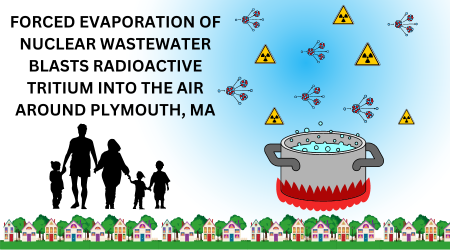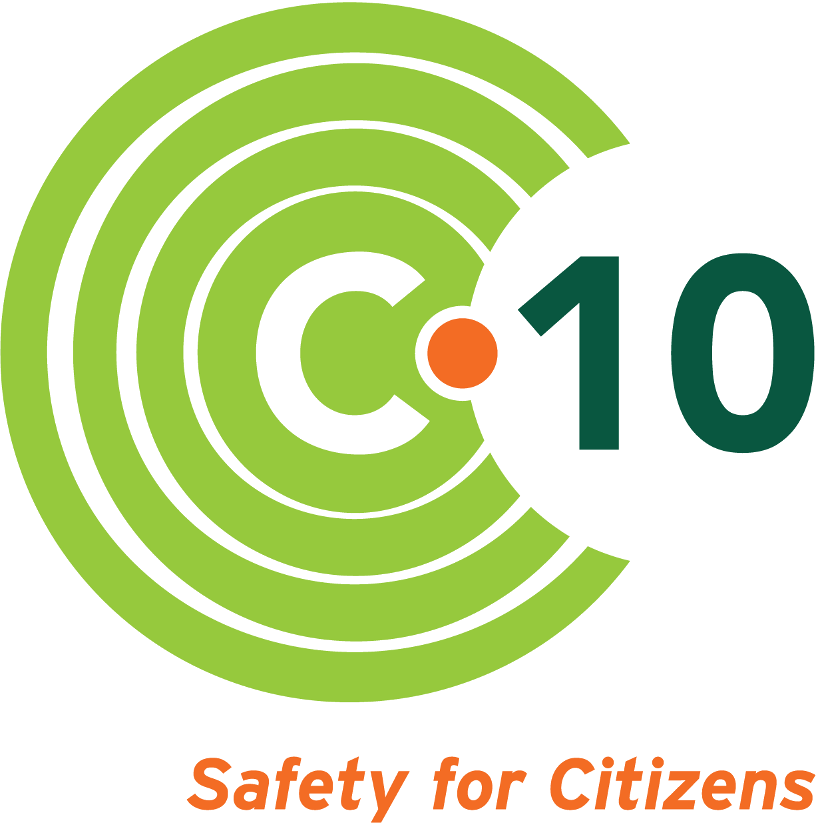Blog Post
C-10 testifies before Atomic Safety & Licensing Board on concrete testing at Seabrook Station
- By C-10 Administrator
- •
- 12 Jul, 2017
By Sarah Doenmez and Natalie Hildt Treat
The term “pro se”
is from Latin, meaning “on one’s own behalf.” As in, without lawyers.
Members of the C-10 Research & Education Foundation’s board of directors have been toiling without the benefit of legal counsel in a case we feel very passionate about: the failing concrete
at Seabrook Station nuclear power plant.
While we aren’t attorneys, nuclear physicists or concrete experts, we have spent countless hours becoming what we’d call “citizen experts” in the matter of Seabrook’s License Amendment Request ( LAR
) relative to the ability of the plant’s concrete to keep the public safe.
Through our own research and by speaking with experts, we’ve learned all that we can on complex technical and legal issues and have asked the U.S. Nuclear Regulatory Commission (NRC) to hold a public hearing on the concrete, and admit us as intervenors in the docket.
As a group located within the plant’s ten-mile evacuation zone, concerned with the crumbling concrete that is supposed to protect us and the public from serious radiation exposure, we’d to think we have common sense on our side.
On Thursday June 29, C-10 board members Chris Nord, Pat Skibbee, Sarah Doenmez and Debbie Grinnell joined Executive Director Natalie Hildt Treat to make our case before the NRC’s Atomic Safety and Licensing Board. It was a big deal. And we were proud of our effort on behalf of our members and the public at large.

Judges Ronald Spritzer, Nicholas Trikouros, and Sekazi Mtingwa presided over the hearing, in which the NRC Staff and counsel for Nextera also made their cases about why C-10 should not be granted intervenor status.
Using video conference technology, we testified from our Newburyport, Mass. headquarters to a panel of three judges who sat in Rockville, Maryland. Also joining by video were attorneys from the NRC staff and representing plant owner NextEra Energy – each working to dismiss our petition based on legal technicalities regarding the way we attempted to show standing in the case, even though the NRC staff admitted that some of our contentions were valid.
“How confident are you that in-plane monitoring is sufficient for testing?” Judge Mtingwa asked NextEra attorney Ryan Lighty. Mtingwa also asked why Seabrook’s plant owner couldn’t use the concrete from the moth-balled Seabrook Unit Two, and about the size of the core samples taken.
Judge Trikouros asked about a partially redacted table in the License Amendment Request. “The LAR indicates that some mitigating action will be taken,” if the (redacted threshold level) is reached in the aging concrete. “But C-10’s concrete expert Paul Brown has stated that there is no way to stop the process. That’s confusing,” said Trikouros.
Despite an off-camera break, NextEra’s Lighty seemed flustered, indicating that what they meant is that they would take corrective action before
the concrete got to that point. Hmmm.
C-10’s position is that Seabrook’s operating license must not be amended or renewed until and unless there is a full analysis of the severity of the ASR degradation of Seabrook’s concrete – especially in the containment building and the spent fuel pool – and a plan to manage the condition.
Seabrook Station has been operating outside of its design basis since alkali silica reaction was detected there in 2009. The NRC has found Seabrook “degraded but operable” with ASR visible in 26 of its buildings at the plant.
Since there is no known fix for ASR, Seabrook is technically generating power outside of its license. In order to keep operating legally, Nextera has filed for a license amendment, to change the basic contract with the NRC. This is critical in relation to the license renewal Nextera filed for Seabrook in 2010 to keep operating from 2030 to 2050. C-10 has been a vocal defender of public safety and environment since ASR was first reported at Seabrook.
Does a group within 10 miles of Seabrook have legal standing?
Treat, whose residence in Salisbury is about five miles from the plant, made the case for our standing in the case by speaking to the potential for harm if the License Amendment Request were granted. Following are excerpts of Treat’s remarks:
- NRC has acknowledged that the concrete at Seabrook Station is failing due to Alkali-Silica Reaction (or ASR) and that there is no remedy . That is why NextEra was compelled to file a License Amendment Request. That is why we are here today.
- NRC has admitted that you cannot know the true rate or extent of the concrete degradation , therefore cannot know when a catastrophic failure may happen. Reasonable assurance of adequate protection for the public is NRC’s ultimate responsibility.
- The concrete walls and containment dome at Seabrook that are experiencing ASR are what separate C-10, its members, and the public at large from exposure to some of the most deadly toxic materials on earth.
- C-10 Foundation’s office and my home are both within 10 miles of Seabrook Station, thus in harm’s path should there be a significant release of radiation. The majority of our members and board live within the 10-mile Emergency Planning Zone (or EPZ).
- No one believes that a catastrophic event – such as a Three-Mile Island, Chernobyl or Fukashima can happen – until it does . But as we know accidents can, and do , happen.
- While NRC claims our alleged injury is merely hypothetical, by acknowledging in its response to our April 10 petition that we have made a viable contention, NRC has also effectively admitted that C-10 and our members are exposed to the risk of harm due to radiological contamination resulting from the concrete degradation.
- If this LAR is granted, C-10, our members, and the public at large, will remain at heightened risk of physical and financial harm should the degraded concrete fail.
- The facts alleged in our filings to date have satisfied both traditional and proximity-based standing requirements.
- The organization of C-10 would be harmed if failing concrete at Seabrook’s containment structures contributed to a radiological release that caused us to evacuate our office and cease operations. Given the choice of staying or fleeing the area with my child, I would of course evacuate, and be unable to perform my job as contracted with the Commonwealth of Massachusetts Department of Public Health.
- Likewise, our board of directors and members would be forced to evacuate their homes , with the potential for serious physical harm and financial losses.
As the Portsmouth Herald’s Max Sullivan reported
,
“Ryan Lighty, who represented NextEra, argued C-10′s petition to intervene should be denied because the group technically did not plead standing in its petition, which he said was required by the NRC.
The board’s Administrative Judge Ronald Spritzer said while the petition did not have a section labeled ‘standing,’ it gave C-10′s address and information about its proximity to the plant. He asked Lighty, ‘Why does it matter?’ if the facts are present in the petition. Lighty replied NextEra believed the requirement should have been followed and should eliminate the group from intervening.”
Defending our contentions and urging sound regulation
Board member and Newbury, Mass. resident Chris Nord spoke powerfully against the validity of a study of ASR funded by Nextera and undertaken at the University of Texas Austin as a reliable representation of conditions at Seabrook Station. The study is intended to provide support for Nextera’s contention that the ASR at Seabrook can be managed by following a protocol of primarily visual inspection at intervals of 6 months – 3 years.

Sarah Doenmez, board member and resident of Dublin, N.H. defined C-10’s position on the need for thorough petrographic analysis aimed to provide pertinent information about the structure’s concrete including regular sampling by core boring, ultrasonic imaging, and petrochemical analysis throughout the station to understand the condition of the interior Seabrook’s concrete and reinforcing rebar.
These procedures are supported by experts and are in line with standard and accepted practice in the concrete industry, which form the basis for C-10’s position.
Pat Skibbee, C-10’s board president and resident of West Newbury, Mass. advanced the concept of a “tipping point” in ASR degradation, clarifying that the reaction accelerates over time and will go out of control at an undeterminable point in time.
Skibbee also pointed out the lack of support for Nextera’s claim that the concrete used in the Texas test and Seabrook’s concrete are actually similar: “There is no chart or table or text comparing the chemical/molecular make of the two concretes. It is stated in the MPR
(consultant’s report) that all the concrete used in the large-scale Texas tests was exactly the same; elsewhere it is stated that the Seabrook concrete is ‘inhomogeneous,’ which means, I think, heterogeneous; i.e., different mixes were used in different parts of the plant.”
“There were 12 different mixes, according to the report ( MPR
4153 page 22, Section 3.3.1) Therefore, representativeness has not been demonstrated,” Skibbee stated. Both these points were taken up by the Board in questioning Nextera.
C-10 gave the Atomic Safety and Licensing Board plenty to think about regarding Nextera’s License Amendment Request, and we made a strong claim to intervener status. A decision on C-10’s standing and the admissibility of our contentions will be rendered within 45 days from the oral arguments. Transcripts of the hearing will be available at the Electronic Hearing Docket at the NRC site here.
There is more to come in our work to ensure that the NRC and Nextera properly address the ASR degradation at Seabrook Station. If you are interested in learning more and getting involved, please email info@c-10.org. Further information on C-10’s contentions are on our website at C-10.org.
C-10 Research & Education Foundation, Inc.
11 Chestnut Street
Amesbury, MA 01913
Phone: (978) 465-6646
Email: info@c-10.org





